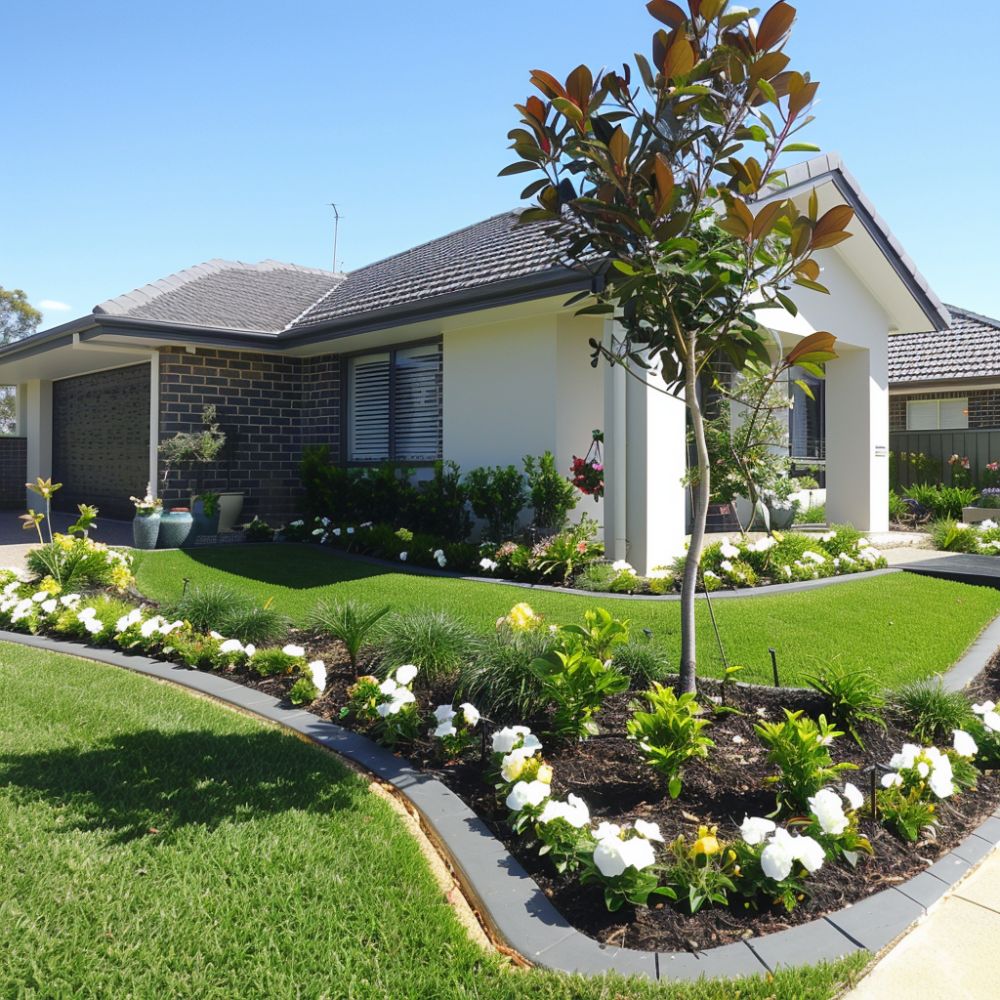Navigating the intricacies of landscaping can be quite daunting as a homeowner. You want your garden to be a perfect blend of beauty and functionality, but where do you start? One essential aspect you may well have come across is softscaping.
Softscaping involves the living elements of your landscape, such as plants, trees, and shrubs. It’s not just about adding greenery for aesthetics; softscaping can soften the hard edges of your garden, enhance the natural beauty of your space, and even address practical concerns like erosion and water runoff.
Understanding what softscaping entails and how it can transform your outdoor space is crucial. In this article, we’ll delve into the basics of softscaping, explore its benefits, and guide you on how to incorporate it into your garden effectively.
What Is Softscape?
Defining Softscape Elements
Softscaping includes the living elements of landscape design. These elements comprise plants, shrubs, flowers, grass and tree. Soil condition, sunlight, and the layout influence which plants thrive. A variety of flowers, such as roses and tulips, add colour and texture. Shrubs, like hedges, provide structure.
Softscaping contrasts with hardscaping. It involves natural elements rather than man-made features. Gardens with a balanced mix appear vibrant and inviting. Softscaping incorporates the organic, lively parts of your garden to enhance its appeal.
See more: Hardscape vs. Softscape

The Role of Softscaping in Landscape Design
Softscaping plays a vital role in landscape design. It softens the harsh edges of hardscape elements. For example, creeping vines can cover stone walls, and flower beds can border pathways.
These elements improve the environment by reducing erosion and aiding water absorption. Tree roots landscaping offer shade, while plants can serve as windbreaks. Softscaping also enhances your home’s aesthetic value. Adding plants creates a welcoming atmosphere and boosts curb appeal.
Strategically placing softscape elements transforms your garden. Consider the growth patterns and maintenance needs when planning. Properly designed softscape complements your hardscape, creating a harmonious outdoor space.
Key Components of Softscaping
Types of Plants Used in Softscaping
Plants are the heart of any garden. Common types include shrubs, trees, flowers, and ground covers. Shrubs like boxwood or lavender provide structure. Trees, such as maples or oaks, offer shade and height. Flowers, from roses to daisies, add colour and fragrance. Ground covers like ivy or creeping thyme fill in spaces.

The Importance of Soil and Mulch
Soil serves as the foundation for plants’ growth. Different plants require different soil types. Testing your soil helps determine its pH and nutrient levels. Compost can enrich the soil.
Mulch, conversely, helps retain moisture. It also reduces weed growth and regulates soil temperature. Organic mulch includes wood chips and straw. Inorganic options like gravel serve similar functions. Regularly replenishing mulch keeps your garden healthy.
Benefits of Softscaping
Environmental Advantages
Softscaping enhances the environment. Plants, trees, and shrubs absorb carbon dioxide and release oxygen, improving air quality. Additionally, they serve as habitats for local wildlife, supporting biodiversity. Plants also aid in water conservation by reducing runoff and promoting groundwater recharge.
Aesthetic Value and Psychological Benefits
Softscaping transforms your garden into a visually appealing space. A mix of colourful flowers and lush greenery can elevate the overall look of your landscape. The presence of plants has a calming effect, reducing stress and promoting mental well-being. Time spent in a well-maintained garden can boost your mood and improve your quality of life.
Planning and Implementing Softscaping
Design Principles for Effective Softscaping
Effective softscaping demands a thoughtful approach. Start by assessing the space and defining its purpose. Consider focal points like trees or flower beds to draw attention. Use contrasting textures and colours to create visual interest.
Balance is crucial. Integrate plants and hardscape elements harmoniously. Group plants with similar water needs to maintain consistency and health. Layering different plant heights adds depth and dimension.
Selecting the Right Plants for Your Climate and Soil
Selecting appropriate plants is essential. Choose species adapted to your local climate and soil type. Native plants often thrive with minimal care and support local wildlife.
Consider the garden’s sunlight exposure. Some plants flourish in the shade, while others require full sun. Soil quality impacts plant health, so test pH levels and amend soil if necessary. Mixing compost can improve fertility and structure.
Focus on sustainability. Opt for drought-tolerant plants in arid regions to conserve water. Mulching helps retain moisture and suppress weeds, promoting a lush and healthy garden.
Maintenance and Care of Softscapes
Routine Care Tips
Regular maintenance keeps softscapes looking vibrant. Tasks like watering, weeding, and trimming are essential. Mow lawns weekly during growing seasons and trim edges for a clean look.
Fertilise plants based on their needs. Spring and late summer are optimal. For pest control, check plants regularly and remove pests by hand or use eco-friendly sprays. Aerate soil every spring to promote healthy root growth.
Pruning promotes healthy growth and removes dead or diseased branches. Use clean, sharp tools to avoid damaging plants. Mulching helps retain moisture and suppress weeds. Apply a fresh layer annually.
Seasonal Softscaping Considerations
Adapt care routines to each season. In spring, focus on planting and fertilising. As temperatures rise, increase watering frequency, especially for young plants.
Summer heat can stress plants. Water deeply early in the morning or late in the evening to reduce evaporation. Apply mulch to keep the soil cool.
Autumn is for preparing plants for winter. Prune and clear fallen leaves to prevent disease. Add compost to enrich the soil for the next growing season.
Winter requires less active maintenance. Protect sensitive plants with burlap or frost cloth. Water sparingly, ensuring soil drains well to avoid root rot.
See More:
